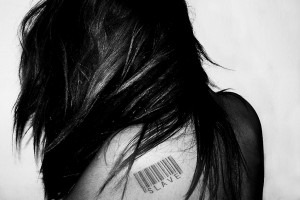 Several months after I started working with trafficked women through Breakthrough Urban Ministries on Chicago’s West Side, I found myself thinking about what it must be like to think of one’s body as a commodity. I also began to wonder what circumstances could bring a person to such a place, and how I, as a social services employee, could work to chip away at the trafficking industry. What desperate situations create these opportunities for traffickers? For a female already living in survival mode, what might the idea that sex is her most practical skill do to her?
Several months after I started working with trafficked women through Breakthrough Urban Ministries on Chicago’s West Side, I found myself thinking about what it must be like to think of one’s body as a commodity. I also began to wonder what circumstances could bring a person to such a place, and how I, as a social services employee, could work to chip away at the trafficking industry. What desperate situations create these opportunities for traffickers? For a female already living in survival mode, what might the idea that sex is her most practical skill do to her?
Recently, the public has become more familiar with the issue of human trafficking and has also taken an active interest in combating it. Yet there is still an overwhelming belief that the problem is easily solved and that physically removing victims puts an end to the abuse. But human trafficking is a far-reaching injustice that is not defined by age, ethnicity, education level, or socioeconomic class.1 Although men and boys are prostituted, females incur a far greater risk. Women in homeless, runaway, and abusive situations are at a higher risk for being forced and coerced into trafficking situations. Research by Shared Hope International suggests that the average age of entry into prostitution or the commercial sex industry in the United States is 13 years old.2
Fifty-seven percent of the participants in a 2008 DePaul University study of sex trafficking in Chicago responded that they were made promises about their involvement in the sex trade that turned out to be false. Their trafficker promised them fame, love, attention, a stable income, or support.2 One-fourth of the female participants in the survey referred to their engagement in the sex trade as “for survival sex.” Survival sex was defined as trading sex for survival needs, such as food, clothing, shelter, or safety.3
The DePaul study concluded that as women progressed through the sex trade industry, they had sex with more customers, traveled to more locations, and were subject to more violence and coercion. Nearly 65 percent of participants said that at one point or another they wanted to leave the sex trade but cited drug addiction and the threat or fear of violence from their traffickers as reasons for staying. Others explained that they had no other options — no home, no money, and no one to care for them. They could not envision making an exit from the industry.4 Other victims report an unshakable stigma attached to their actions that keeps them from seeking help.5 Each trafficking situation is as individual as the female and must be dealt with on personal, individual bases.
Working at Breakthrough, I spoke with women who entered the industry anywhere from before age ten, up through their 20s, many of them being born into the situations that create opportunity for traffickers. Lisa*, age 47, had been an alcoholic since age 8. She began using crack and heroin at age 18 and had worked on the streets, to survive, as a prostitute since age 19. During a short period of time, Lisa’s daughter and grandkids went missing, and her son committed suicide. In addition, her boyfriend, an abuser, was on trial and in and out of jail. That the people she loved were in troublesome situations was a major stressor for Lisa and triggered her recurring addictions. Lisa came in and out of Breakthrough, seeking sanctuary from her domestic violence situation while trying to get clean. Lisa regularly attended AA/NA meetings and a case manager’s support group and saw a behavioral health counselor, but she still struggled with staying out of the sex and drug industries.
Sarah* was another Breakthrough client who battled several addictions and depression that stemmed from early childhood sexual abuse and domestic violence continuing into her adult life. She was first forced into prostitution by a family member and eventually took refuge in heroin. In 2004, she was referred to various treatment centers and stayed at Breakthrough’s facility several times, gradually getting the counseling and holistic support she needed. She was connected with outpatient mental health services in Chicago and through those services received an opportunity to move into her own apartment. Though she was glad to have her own place, her biggest struggle was being alone. She regularly called the shelter, crying and afraid, seeking emotional support.
While working at Breakthrough, I witnessed an underlying fear of freedom in many of the women we served. When not connected to a safe and stable community in which to seek mental and physical healing, many women like Sarah encounter prolonged feelings of isolation. Due to the codependency carefully cultivated in captivity, victims experience difficulty in making their own choices once free. Physically removing a person from a familiar environment, when she may have nowhere new to turn that has been made familiar, might be harsher than a well-intentioned person realizes. Trafficking situations begin with a foundation of mental coercion and abuse.
Well-meaning people who want to rescue others from a trafficking situation encounter complications in which a victim has chased promises that turned out to be lies. This gives the victim no reason to trust a service that sounds good (much like the things promised by a trafficker) but lacks personal repute in her life. No one person can pull the blanket out from under a complicated system of exploitation and oppression and expect that this system, well-oiled by greed and power, will just give up and release its primary source of capital. Coercion and a steady erosion of the human spirit play a much bigger role in trafficking than has been popularly discussed. Traffickers provide or deny certain benefits, make threats, and use verbal abuse in order to compel a person to provide sexual services. They may also institute debt bondage or threaten the lives of a victim’s family.6 Traffickers use mental abuse to establish an environment for sexual abuse, engendering mental instability and a loss of trust and hope in their victims that makes continued manipulation easier and potential rescue harder.
Unfortunately, many social service organizations are understaffed, underfunded, and overwhelmed by the sensitive needs of the victims. Some social service organizations are located in communities where cross-training across various disciplines is lacking, making a multifaceted response to trafficking impossible. In addition, many states with anti-trafficking laws do not provide for shelter (housing) services.7 Even when housing services are available to them, victims lack advocates and access to individualized services.8 To the victim, this may make a service appear a poor substitute for a controlling, funded, organized trafficker with a financial investment in an emotionally codependent person. However, many of these shelter services use solidarity and relationship-building models to demonstrate their willingness to join victims in their fight for independence.
As with any relationship between persons, trust must be built over time, or the victim will go back to a familiar stronghold, no matter how harmful. Agencies and advocates are working to build authentic relationships with the victims/survivors, which over time look very different than the hurtful ones they have come to know. The hard part is, authenticity takes time, and victims are often battling addictions (to drugs, alcohol, or the industry itself) in the meantime.
The primary questions we’re left with are: How do we empower women who come from or are in trafficking situations? What work needs to be done create policies that protect women from exploitation by opportunistic traffickers? The good news is that there are sustainable efforts already occurring at both state and national levels. The very first thing an advocate can do is research anti-trafficking efforts in his or her own state. The Polaris Project has a state-by-state map of trafficking activity (http://www.polarisproject.org/state-map). You can also read Shared Hope International’s National Report of recommendations for state and local policymakers at www.sharedhope.org/Resources/TheNationalReport.aspx or the Justice Department’s Trafficking in Persons Report at www.state.gov/g/tip.
Second, know that addressing a complex, sensitive issue such as human trafficking is intimidating. Do not become discouraged. Day by day, the public is becoming increasingly aware of trafficking, and there are other advocates and service providers who are also educating themselves and their communities. The Chicago Alliance Against Sexual Exploitation has a comprehensive resource guide for specific individual, community, and legislative action. Their resources can be accessed at www.caase.org/resources.aspx. Also, if you see suspicious activity, immediately notify local law enforcement and then call the National Human Trafficking Resource Center: 1-888-373-7888. Tips to both agencies are confidential, and your anonymity will be protected.
Finally, seek out the social services in your area and find out what they are doing to address the problem of trafficking, and see how you can help them in those efforts. In working at Breakthrough, I formed relationships with women in or healing from prostitution, and I learned from them that asking questions, listening to their answers, and providing consistent feedback and follow-through are the most important things. The slow and continued work toward freedom is the only sustainable kind.
*Pseudonyms used to protect victims’ identities.
1. Illinois Criminal Justice Information Authority, DePaul University College of Law. Domestic sex trafficking of Chicago women and girls. May 2008. http://www.law.depaul.edu/centers_institutes/family_law/pdf/sex_trafficking.pdf.
2. Shared Hope International. “The United States: Technology Driving Demand.” http://www.sharedhope.org/Portals/0/Documents/demand_us.pdf.
3. Illinois Criminal Justice Information Authority.
4. Ibid.
5. Shared Hope.
6. Illinois Criminal Justice Information Authority.
7. Family Research Council. Protected Innocence Legislative Framework Briefing. http://www.frc.org/upcomingevents/protectedinnocence-legislative-framework-briefing. 16 June 2011.
8. Shared Hope.





